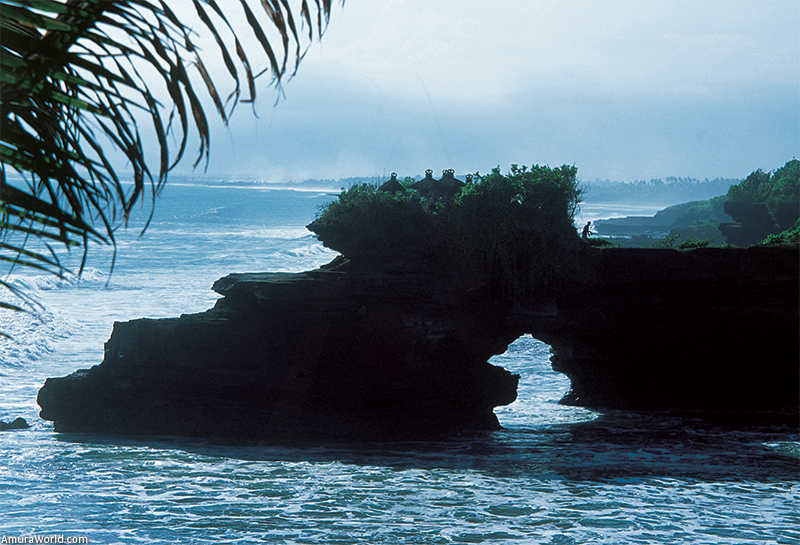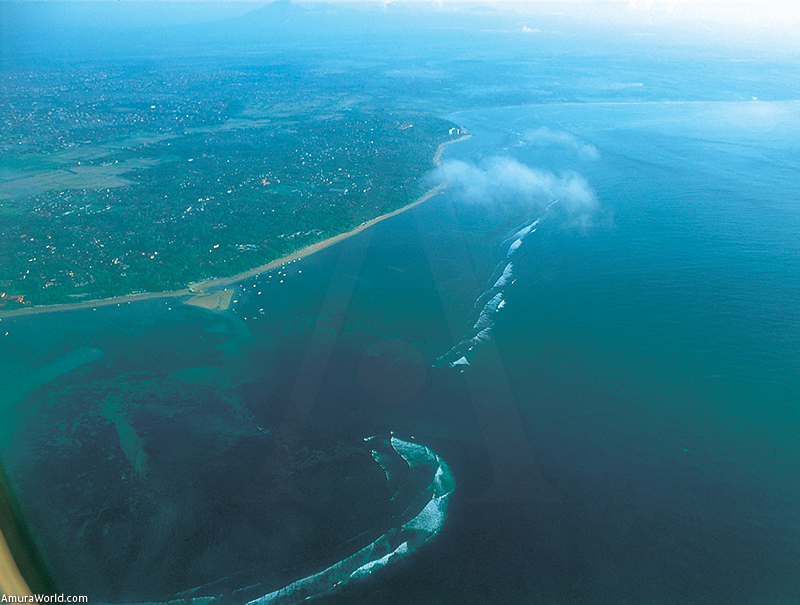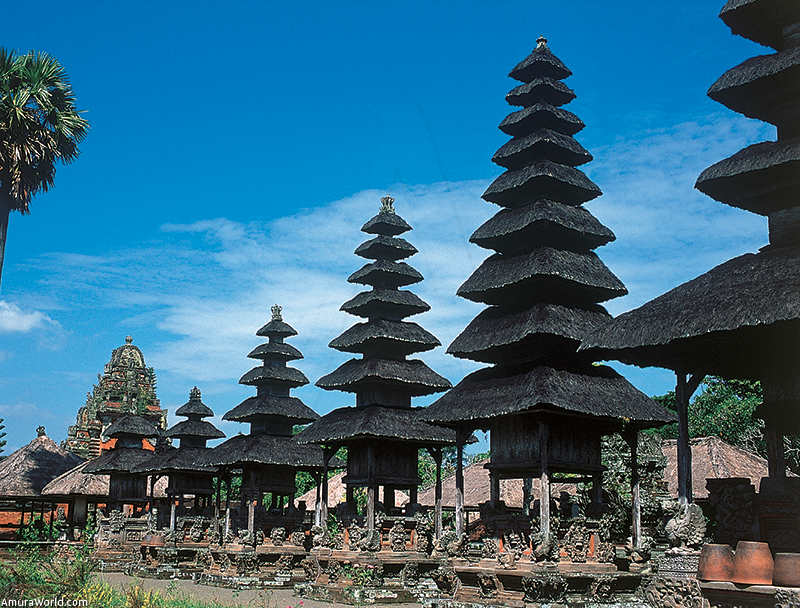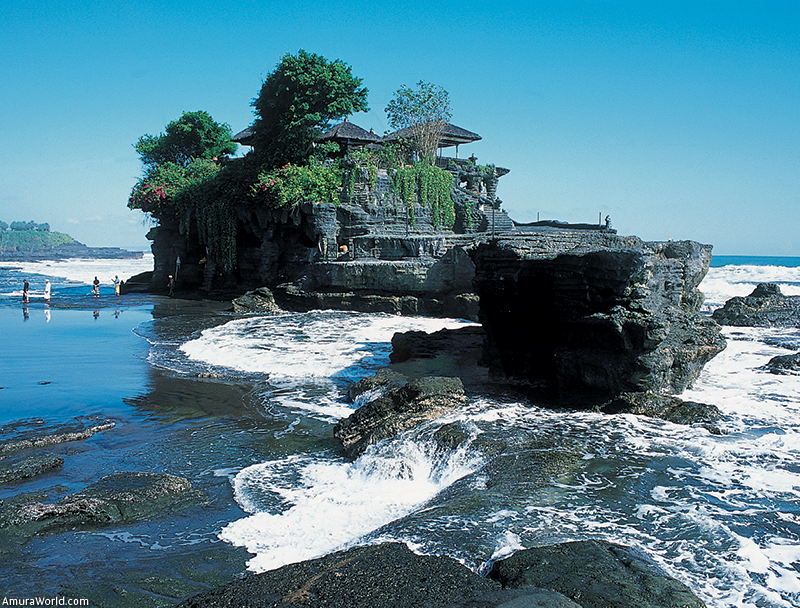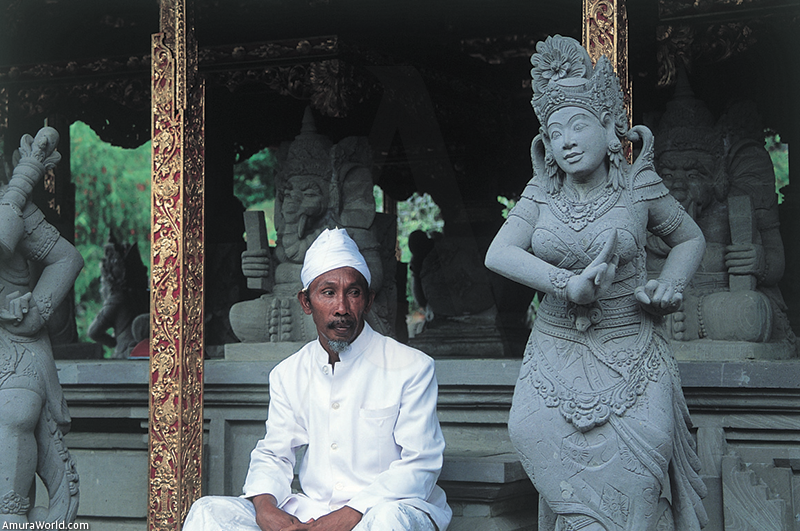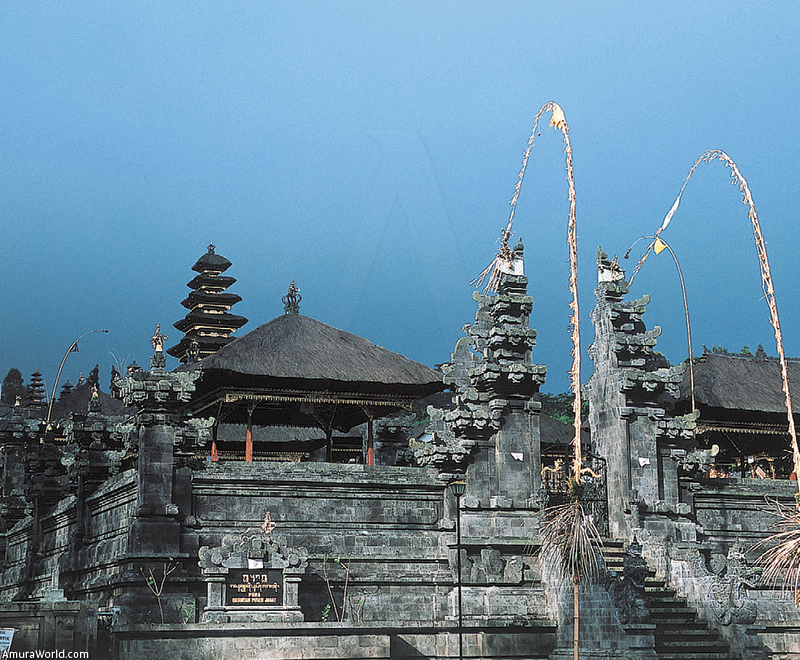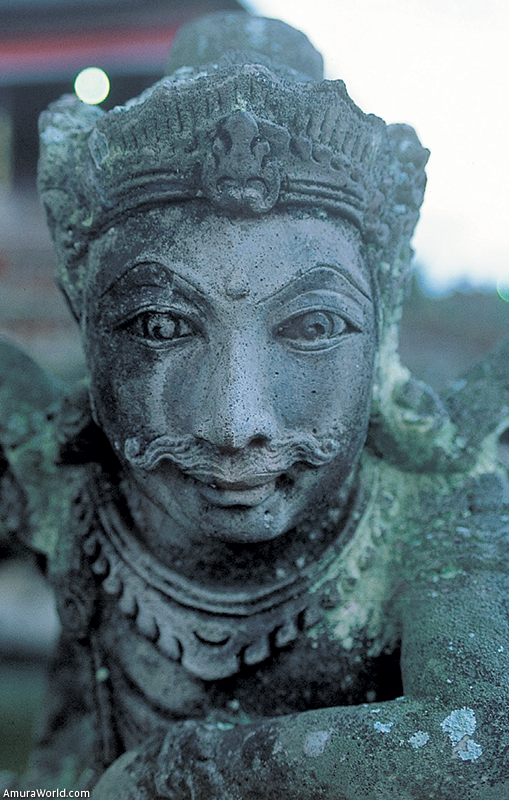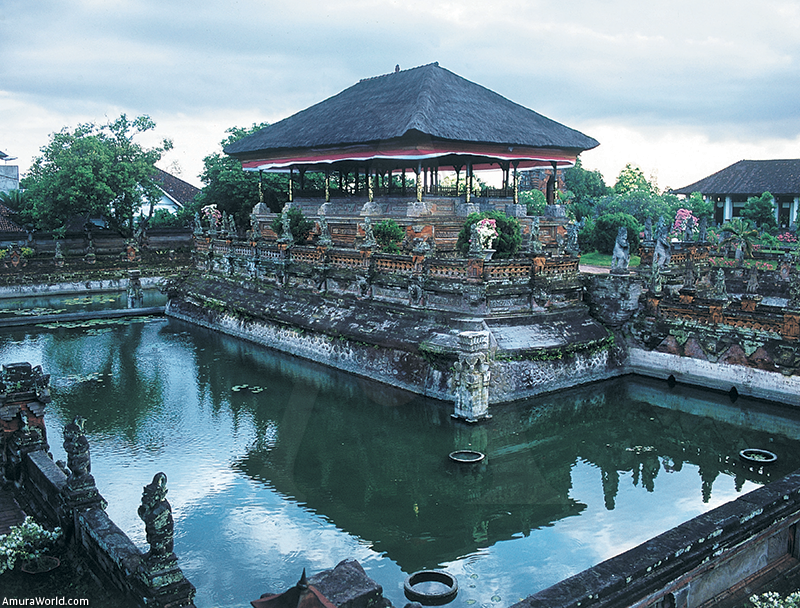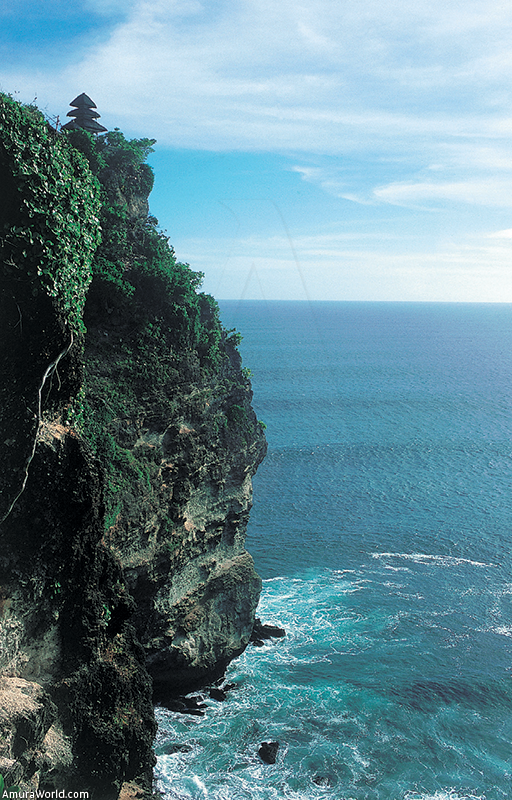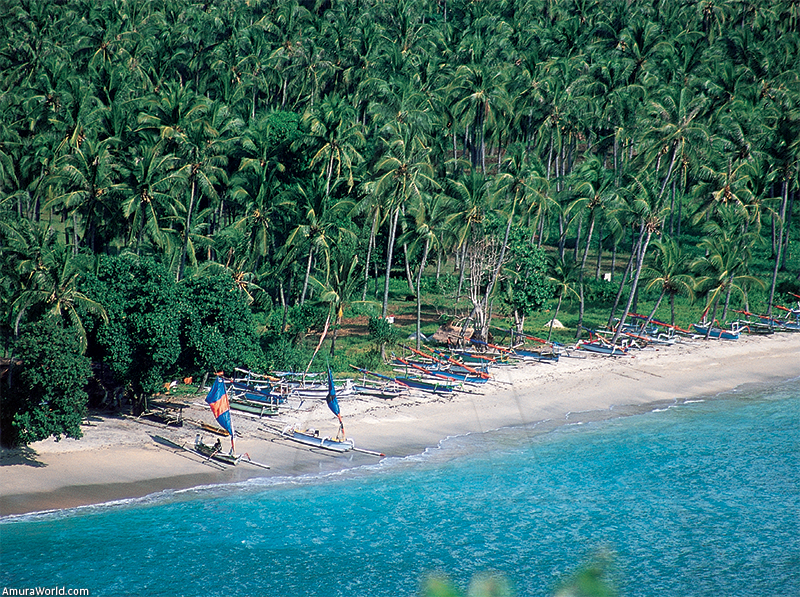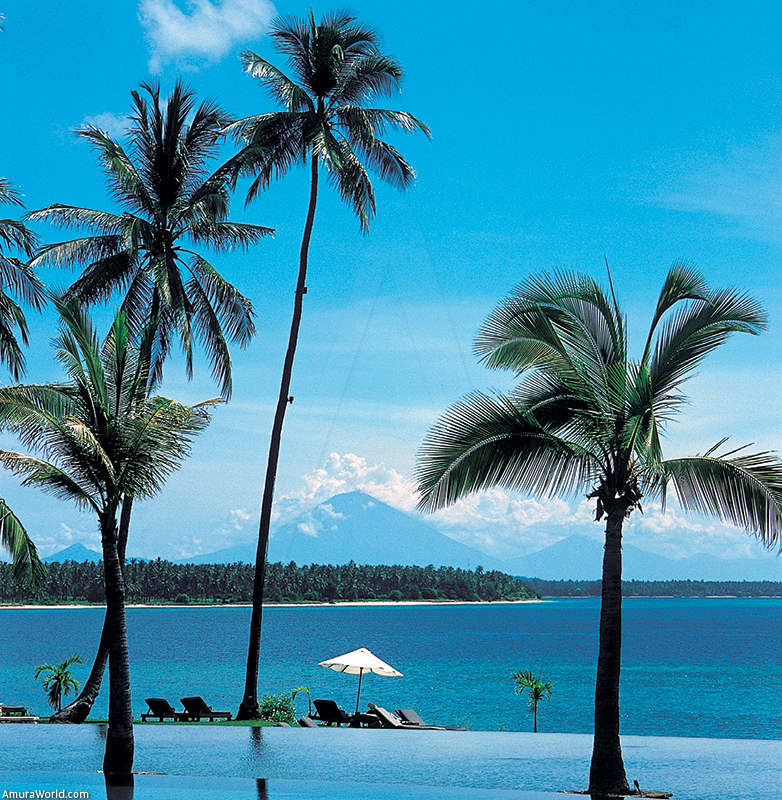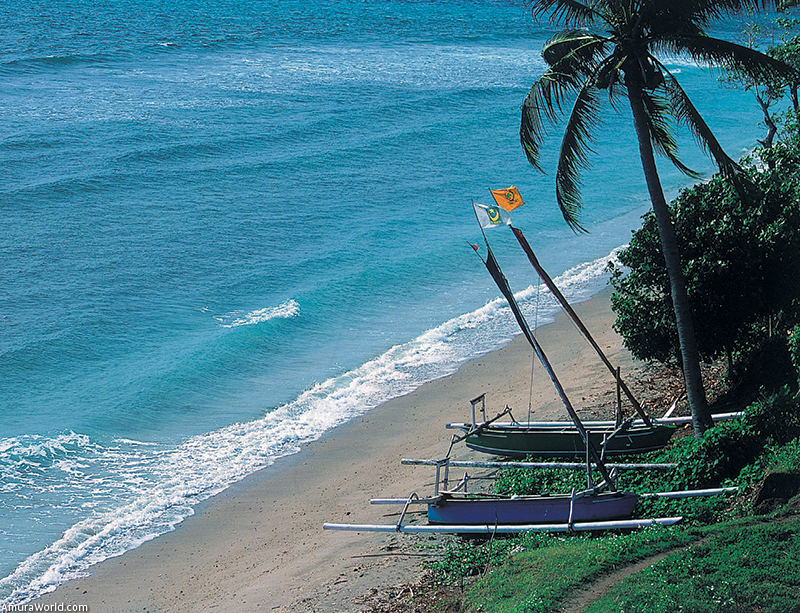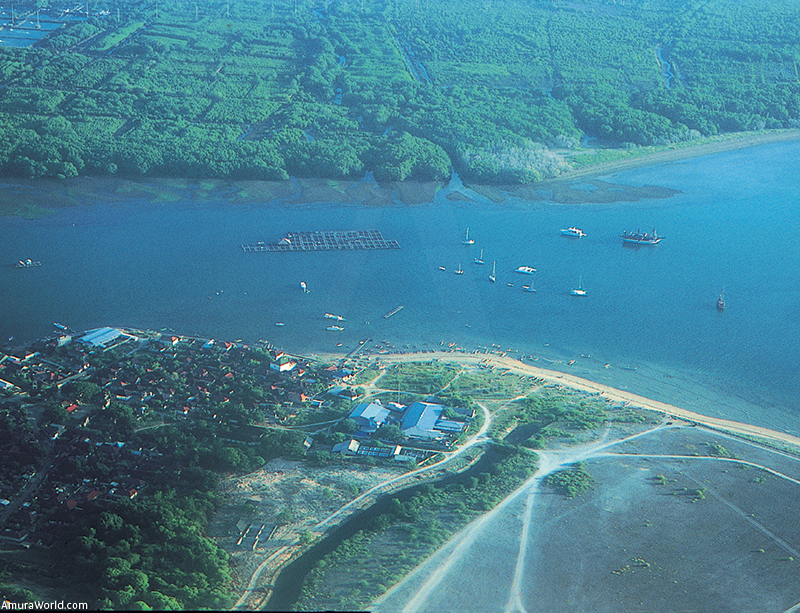Defying a sea protected by the gods
Right in the heart of Indonesia are two islands that rival in beauty and that invite visitors to discover their seas which alternate between calm and angry, long and strong waves, idyllic bays and dangerous reefs. Bali is Hindu, Lombok Muslim: rice paddies adorn them, volcanoes threaten them, monkeys entertain them and the people make them smile. They are like fraternal twins: they look alike and yet are worlds apart. Exploring them is to discover a magical universe immersed in unique traditions, the metallic sounds of the Gamelan and the charming dancers that twist their fingers surrealistically.
Bali is Hindu, Lombok Muslim: rice paddies adorn them, volcanoes threaten them, monkeys entertain them and the people
Bali
We landed in Bali, where our boat awaited us at Benoa, a small marina protected by Serangan island and the slim peninsula that is home to a tiny fishing village. Bali beckons to be discovered, attracting our soul with its charming mountains and villages. Riding a motorcycle, we begin to explore this island created by the gods.
Bali is a treasure blanketing the sides of its volcanoes, encrusted with beautiful temples and decorated with terraced rice paddies that look like symmetrical ribbons. We avoided Dempasar, the capital, a noisy city jammed with traffic that offers little of interest except for its museum and its vibrant market where women sell sublime baskets of flowers and fruit that serve as offerings.
The beaches are uniquely different. Kuta is a long beach whose famous waves attract surfers who come here to defy the sea and hippies from another era. It is bedecked with typical Balinese massage tables and is also the setting of elegant, exclusive hotels like the Oberoi, a veritable garden descended from heaven. Sanur is a beach that is protected by a coral reef whose crystalline waters are so shallow that it makes swimming impossible and disappear at low tide. The hotels are hidden among the foliage, people crowd the beaches and use shoes to splash in the water so as not to cut their feet on the coral or get stung by a sea urchin. Nusa Dua, with its calm waters protected by the coral reef, has become the most exclusive beach, a place where luxury hotels like the Four Seasons are located.
On each tour of the island, the towns invent the art of living within the lush tropical vegetation and the homes invite us to enter a mythical world: their doors represent a divided world, two hands joined in a kind of welcoming prayer. The people are welcoming and smile, the terraced rice paddies are traced on the sides of the mountains, the people working in them are reflected in the water like in a mirror brimming with images and the women bathe in the streams. These are the marvelous scenes that make Bali a celestial universe.
The first excursion takes us to Mengwi, ancient capital of a powerful kingdom, where we find Taman Ayun, a temple built in the 17th century and dedicated to their deified ancestors. Surrounded by a moat, it is a group of carved stone chapels with palm frond roofs that contain representations of Garuda (bird god), Hanuman (monkey god) and other mythical creatures. Sangeh is a sacred forest inhabited by a huge colony of monkeys who, just as is described in the mythical story Râmâyana, have taken over the Bukit Sari temple, bothering tourists while immense bats hang from the tops of the huge trees.
The day ends and, after strolling along the winding paths that wend their way through the green fields, Tanah Lot comes into view, a spectacular place where a lovely temple crowns a black rock in the sea. It is lashed by waves and is only accessible at low tide, when a row of men, wearing white skirts and yellow turbans, ascend the stairs. The temple’s silhouette contrasts against the blue sea and the sunsets are stupendous.
Another day takes us to visit a group of charming towns: Sukawati, with its colorful market and dance academies; Batuan, with its art school and textiles, its unlucky river and the Blabhatuh temple; Mas, established by Brahmins and renowned for its sculptors who work in wood and whose shops are on the main street; Ubud, the Balinese art center, a town that lives to the rhythm of its painters, sculptors and dancers and where life revolves around its artistically carved temple, the gentleness of its inhabitants and the elegance of its beautiful homes. Farmers put out their fighting roosters to enjoy the sun. The Mexican painter Covarrubias, who was always enthralled by the island, said it was so that the roosters could entertain themselves watching the people walk by.
The highway ascends the sides of the volcano to reveal Tampaksiring, where Tirta Empul, a sacred spring, produces huge bubbles in the turquoise water. The spring is set in a stunning complex of temples carved with dragons gracing stairs. Its waters are medicinal and the place is a treasure hidden within the lush vegetation… a mysterious, magical spot.
We reached the edge of the crater of the Batur volcano, an altitude of 1,400 m, and got a wonderful view of the lake. The volcano is licked by threatening clouds, surrounded by lava and immersed within the tropical, humid vegetation. Descending the steep path towards the east, after many curves that allow visitors to enjoy the views of the terraced rice paddies, is Bali’s most sacred temple, Besakih, located at the foot of Mount Agung, a very active volcano 3,142 m high. During its last eruption, in 1963, people died and it spewed lava and covered the sky with ash.
Besakih is a compound of 30 temples built on terraces and dedicated to Brahma, Vishnu and Shiva. It is a great temple, with its staircase decorated with evil gods to the right and benevolent gods to the left, pagodas, and altars, and the ever-present ceremonies that attract elegant women dressed in white and yellow, wearing lace blouses and carrying huge baskets of fruit and flowers.
Reaching the plains we found Klungkung, the ancient royal capital, where we visited the Palace of Justice built in the 18th century, a pyramid adorned with stone sculptures and surrounded by water. It has a gorgeous roof decorated with typical paintings representing the suffering of the guilty, and heaven and hell. Inside, there is a floating pavilion with paintings telling the story of Prince Sutasoha, a reincarnation of Buddha.
Bangli is another of Bali’s sacred temples. One of the best sunsets on the island can be seen from the Uluwatu temple, perched on an awesome cliff that guards the sea and offers a spectacular view while the sun sets in the horizon and monkeys try to steal something from the visitors. At the foot of the cliff is the best place for surfing. It is a spot that attracts surfers from around the world, famous for its gigantic, long waves and the massage cabins that await surfers at the end of the day. Bali is a never-ending story, an enchanted island that surrounds people with a charm that never lets go and penetrates the soul forever. No one can resist Bali’s charm… you will always return to this oasis of peace immersed in tropical foliage.
Bali is a never-ending story, an enchanted island that surrounds people with a charm that never lets go and penetrates the soul forever.
After all this charm, we set sail just as the sun was illuminating Port Benoa. We sailed around the Bukit peninsula, following the Benoa and Nusa Dua beaches after passing flat Serangan island, renowned for its turtle hatcheries.
The impressive cliffs defend the southern part of Bali, lashed by waves, and, after passing Cape Uluwatu and admiring the long Kuta beaches, we reached Tanah Lot and admired its temple from the sea. It is a magical place where the gods of water live. Here, we deposited our offerings before heading west.
Then, we came upon a unique setting: a coast of black rocks and long beaches battered by waves more than three meters high, a deserted place, unknown to tourists. A few remote villages, with just a few fishermen who live in harmony with the land, are a paradise for surfers. Passing Point Negara, we left the Indian Ocean to enter the calmer waters of the Bali Strait, where we finally found our first dock, Gilimanuk, a simple natural port where you can take the ferry that travels 30 nm to Java. There is not much to see and do in this faraway port, that is located at the edge of a dense jungle and lives to the rhythm of the ferries, but is an ideal spot to spend the night and enjoy a meal.
In the morning, the waters of the strait are strangely serene: it is the ideal moment to set sail and pass the northwestern point. When entering the sea of Bali, we discover a dazzling mirror, quiet waters, fixed in time, and no breeze which forces us to use the motor. Contrary to the southern coast, here there are no waves, the sea is shallow and we find many fishermen with their prahus, boats with a sail and lateral flotation devices.
Menjangan Island seems to float at the entrance to the Teluk Trima Gulf and, passing the rocky enclaves of Banyuwedang, a shelter for fishermen, we come upon a long, black sand beach that stretches to Port Seririt. It is a fisherman’s paradise, a place to observe, using a simple visor, the coral reef, only 300 m from the coast. It is brushed by a light breeze, with infrequent winds. When we approached huge, black Lovina beach at sunset, we encountered many dolphins that accompanied us. It is a peaceful place, far from the usual tourist haunts, where you can enjoy the rich sunsets and sunrises on the sea.
We then entered Port Singaraja, the first one established on the island which was the capital during the Dutch colonial period. It is a beautiful, tranquil city and the ideal place for relaxing, dining on excellent seafood and enjoying the company of the hospitable people. The ships anchored in the port transport the coffee produced in the region. The sea is in constant motion and the northern temples, sturdier and more baroque, differ from those in the south.
At dawn, the sun lights up the quiet waters and, passing Bali’s northern point, the wind picked up, allowing us to pick up speed and pass the deserted coast that lies at the foot of volcanoes covered in tall trees that hide fishing villages. Tulambsen, with the wreck of the U.S. ship Liberty, is an extraordinary place to dive. This ship was torpedoed by a Japanese submarine on January 11, 1942 and was run aground to save its cargo. In 1963, when the Agung volcano erupted, the lava reached the coast and pushed the ship into the water. It sank 30 m from the black rock beach to a depth of only 25 m. It has become a haven for divers and for fish of all sizes and colors.
Amed appears when you sail to the east. This is an authentic fishing village on the edge of a black sand beach where the prahus seem to dance on the sea: they are like strange dragonflies putting on an unusual show. The northern coast of Bali is peaceful, with amazing coral reefs filled with beautiful fish and prahus sailing the length of its black beaches.
Lombok
We reached Bali’s easternmost point, a place protected by mount Seraya (1,140 m), and entered the Lombok Strait. We crossed it, taking advantage of a good breeze, and reached Lombok island, in the Tanjung zone, and docked in Medana Bay which shelters the Oberoi. It is an excellent hotel of exquisite design that is set at the edge of a white sand beach. It has a dock and is an Eden for divers: close to the shore, near the islands of Gili Air, Meno and Trawangan, with a gorgeous ocean and spectacular sea floor. It is a veritable natural aquarium with white sand beaches.
After these days sailing, it was an immense pleasure to enjoy a marvelous candle-lit dinner in the Oberoi while listening to the breeze playing through the palm trees.
The western coast, to Ampenan, is a series of attractive bays with golden sand beaches framed by coconut palms that grow at the foot of the mountains, coral reefs, fishing villages and prahus that light up the blue sea. It is an authentic wonderland for those who adore the sun and beach. Senggigi, an ancient paradise invaded by tourists and big hotels, is renowned for its impressive sunsets when the sun hides behind Bali’s Agung volcano. After touring these beautiful bays we reached the small port of Ampenan and docked in order to explore the island.
Lombok is a peaceful place with rice paddies where people work under the impassive sun, and mountains covered with jungle; Sukara is a town renowned for its weavers, and Penajuk is famed for its ceramicists, mountains with rivers and colonies of monkeys like the Pusuk Monkey Forest. The mosques dominate the towns: Islam is the island’s main religion. Lombok is a haven of peace and beauty. Sailing to the south along the coastal plain, we pass Lembar, a small port that awakens with the arrival of the ferry from Bali, and we come upon a rugged, protected coast dotted with small islands like Gili Nanggu and Gili Gede, a divers paradise. Passing Bangko-Bangko, the sea opens onto enormous, long waves and a beach that is a dreamcome- true for surfing buffs.
Lombok is a haven of peace and beauty
We had a good wind and sailed northwest to arrive at Bali in a little over four hours, reaching the impressive black sand beach of Ujung, where the vividly-colored prahus come to rest. Towards the south is Candi Dasa with its long beach, coral reef inhabited by multi-colored fish, numerous hotels and too many people.
Padangbai is a desolate black sand beach with an active but unattractive port where you can dock for the night and catch the ferry to Lombok.
We spent our last day on board discovering Nusa Penida island, a place of beautiful white sand beaches to the north and, to the south, a stormy coast filled with high cliffs, small bays with beautiful beaches only accessible by dizzying stairs and a shark-infested sea.
Nusa Lembongan, a small satellite island only four kilometers long, which specializes in the cultivation of algae for the cosmetics industry, is also a diver’s paradise. Finally, we sailed along the length of the pleasant Sanur beach, a place protected by a coral reef, to once again arrive in Benoa.
A real paradise
From the heights of a cliff in Uluwatu, facing a marvelous sunset, accompanied by the murmur of the strong waves, I meditated, images of sublime temples, Hindu gods, peaceful mosques, thieving monkeys, beautiful dancers, and awesome views of amazing volcanoes adorned with magnificent rice fields invading my thoughts. Bali and Lombok beckon, inspiring deep meditation, and their surprising seas exalt moments of serenity that were invented by the gods. These calm, peaceful islands, created by them for the delight of mortals, make up an authentic paradise on earth and sea.
Text: Patrick Monney ± Photo: Patrick Monney

